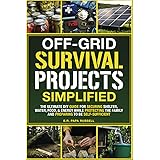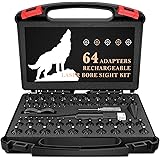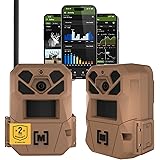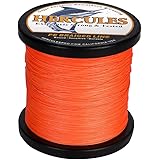Master Essential Wilderness Survival Skills: Your Ultimate Guide to Thriving in the Wild
Have you ever found yourself wondering what you would do if you suddenly faced an unexpected wilderness challenge? The video above offers a fantastic rundown of critical skills, providing essential common sense factoids and pieces of life advice. Building on those foundations, this guide will delve deeper into each vital technique, ensuring you are better prepared to face the unpredictable challenges of the great outdoors. True preparedness empowers you, transforming daunting scenarios into manageable situations.While we may not all be seasoned wildlife experts, understanding fundamental wilderness survival skills can make an immense difference. It’s about more than just knowledge; it’s about fostering resilience and self-reliance. From signaling for help to securing basic necessities like water and shelter, each skill builds upon the last, creating a comprehensive safety net. Let’s explore these crucial **wilderness survival skills** in more detail, equipping you with the confidence to navigate the wild.
Signaling for Rescue: The Power of a Signal Fire
Imagine if you were lost and needed to attract attention quickly. A signal fire stands as one of the most effective methods for communicating distress over vast distances. To maximize its visibility, strategically choose a high point like a hilltop or a wide-open clearing, ensuring an unobstructed view for potential rescuers.
Starting the fire itself requires careful preparation. Gather an abundance of dry tinder—small, easily ignitable material like shredded bark, dry leaves, or cotton balls if you have them—along with kindling and larger firewood. If you lack matches or a lighter, resourceful alternatives include using a magnifying glass or a reflective object like a mirror to focus sunlight onto your tinder. In a pinch, the terminals of a car battery can also create a spark if carefully managed. For the truly traditional approach, patiently rubbing two sticks together or banging flint-like rocks together can eventually yield a spark, demanding persistence and correct technique.
Once you see or hear a plane or helicopter, immediately pile green, leafy branches or damp moss onto your established fire. This creates thick, dark smoke, which is far more visible against most natural backdrops than bright flames alone. Your goal is to maintain that smoke plume until rescue is confirmed, requiring a continuous supply of green fuel. The ability to create and sustain a signal fire is paramount for anyone needing to be located in a remote area.
Maintaining Health: Wilderness Dental Hygiene
Even when stranded in the wild, personal hygiene remains crucial, not just for comfort but for preventing serious health issues. Neglecting your oral health can lead to infections or diseases, which would severely complicate any survival situation. Keeping your teeth and gums clean might seem trivial, yet it’s a vital component of overall well-being.
To brush your teeth without a toothbrush, search for a twig from a non-poisonous, fibrous tree. Good choices often include willow or birch. Chew one end of the twig until the fibers separate, creating a makeshift brush. You can then use this to gently scrape away food particles and plaque from your teeth and gums. This simple action can significantly reduce the build-up of harmful bacteria.
For a natural mouthwash, boil the bark from trees rich in tannic acid, such as oaks, birch, hickory, aspen, or poplar. The tannins have antiseptic properties that can help cleanse your mouth and freshen your breath. Allow the concoction to cool before rinsing. Alternatively, chewing on certain saps or even just a clean, fibrous stick can help dislodge debris and stimulate saliva production, which naturally cleanses the mouth. Maintaining this basic level of oral hygiene can prevent painful infections that could otherwise debilitate you in a survival scenario.
Knot Tying Essentials: Mastering the Bowline Knot
If your knot-tying experience extends only to shoelaces, you’re not alone, but the wilderness demands more. Knowing how to tie even one reliable knot, like the bowline, can be a game-changer. The bowline is an ancient, incredibly strong, and secure loop knot that won’t slip or bind, making it indispensable for various **survival skills**.
This knot is famously remembered through a mnemonic device involving a rabbit: “The rabbit comes up out of his hole, goes around a tree, and gets scared and goes back down his hole.” This playful visualization helps simplify the steps, which are as follows:
- First, make a small loop (the ‘rabbit’s hole’) near one end of the rope.
- Next, pass the working end of the rope (the ‘rabbit’) up through this loop.
- Then, take the ‘rabbit’ behind and around the standing part of the rope (the ‘tree’).
- Finally, pass the ‘rabbit’ back down through the original loop (back into its ‘hole’).
Once you’ve practiced a few times, it becomes second nature. This knot can be used to secure a rope to a tree, create a non-slip loop for lifting heavy objects, or even form a secure harness in an emergency. Mastering the bowline is a fundamental skill for anyone venturing into the great outdoors, showcasing its versatility and strength.
Navigating the Wild: Finding Your Way Without a Compass
Getting lost is a common fear, but the ability to navigate without modern tools is a core **wilderness survival skill**. During the day, if you possess an analog watch, it can double as a compass. Hold it horizontally and, if you’re in the Northern Hemisphere, point the hour hand directly at the sun. Bisect the angle between the hour hand and the 12 o’clock mark, and that line will point north-south. In the Southern Hemisphere, the process is slightly reversed: point the 12 o’clock mark at the sun, and the bisected angle will still indicate north-south. This simple trick provides surprisingly accurate directional guidance.
If you don’t have a watch, the sun’s general path offers a basic orientation. The sun consistently rises in the east and sets in the west, regardless of your location. This allows you to establish a rough east-west line, giving you a starting point for determining other directions. However, for more precise nighttime navigation, look to the stars.
Locate the Big Dipper and the Little Dipper constellations. Imagine a straight line extending from the two stars at the outer edge of the Big Dipper’s “cup.” Follow this imaginary line to the end of the Little Dipper’s handle, where you’ll find Polaris, the North Star. Polaris always points to True North, offering an unwavering directional beacon. This celestial guide, along with other constellations like Cassiopeia, provides a reliable means to find your way, even under the darkest skies. Knowing these methods can keep you moving in the right direction and prevent further disorientation.
DIY First Aid: Healing in the Backcountry
When professional medical help is far away, effective DIY first aid becomes a critical survival asset. Imagine you’ve sustained an injury in the wilderness, and your first aid kit is nowhere to be found. Your immediate priority is to clean the wound thoroughly. Purified water is ideal for this, but any clean water will suffice to wash away dirt and debris. This step is crucial in preventing infection, which can quickly escalate into a life-threatening situation in remote conditions.
Once cleaned, you’ll need to cover the wound. A clean piece of cloth from your clothing or bandana can serve as a makeshift bandage. Apply gentle, consistent pressure to help control bleeding and keep the wound clean. For additional support, especially for sprains or deeper cuts, you can cool the area with natural materials like mud or sphagnum moss. Sphagnum moss, often found in damp, shaded areas, possesses natural antiseptic qualities and excellent absorption capabilities, making it a surprisingly effective wound dressing.
As a natural antibiotic, look for “Old Man’s Beard” lichen, a distinctive green, bushy lichen that hangs from tree branches. Applied directly to the wound, it’s believed to have properties that can inhibit bacterial growth. While these methods are not a substitute for professional medical care, they can provide vital interim support for injuries ranging from minor cuts to more serious wounds, potentially making the difference between recovery and severe complications in a survival scenario. Always assess the severity of the wound and seek professional help as soon as possible.
Foraging and Hunting: Securing Wilderness Food
Finding food in the wild is a cornerstone of long-term survival. One effective method for catching small game or fish is crafting a split-tip gig. To make one, find a small, sturdy sapling, approximately an inch in diameter. Cut the thicker end into four equal parts, extending about 10 inches down from the top. Insert a smaller stick or wedge to spread these parts, creating a multi-pronged spear. Finally, use a rock or knife to sharpen the tips, making them effective for spearing everything from snakes and chipmunks to fish.
Foraging for edible plants requires extreme caution. While guidebooks are ideal, if unavailable, you might consider the risky path of trial and error. However, this approach carries a significant danger of consuming poisonous plants. A common rhyme warns, “White and yellow, kill a fella. Purple and blue, good for you,” but this is an oversimplification and not entirely reliable. Instead, adhere to strict rules of thumb to minimize risk:
- **Avoid plants with:**
- Milky or discolored sap
- Three-leaved growth patterns (like poison ivy)
- Almond-scented leaves or bark
- Seeds or beans inside pods
- Anything that looks like a mushroom, unless you are an absolute expert in mycology.
These guidelines drastically reduce your chances of ingesting harmful flora. It’s imperative to remember that even small amounts of certain poisonous plants can cause severe illness or death. Prioritizing safe food identification is paramount when you are relying on the land for sustenance, making careful identification a non-negotiable **wilderness survival skill**.
The Art of Fire Building: Warmth, Cooking, and Protection
Fire is not just a comfort; it is a multi-functional survival tool, providing warmth, cooking capabilities, water purification, and psychological comfort. The first step in building a fire is gathering excellent tinder. This isn’t the dating app; it refers to extremely fine, dry material that will readily catch a spark and burst into flame. Examples include finely shredded bark, dry grass, bird’s nests, or even cotton lint. Break these into the smallest bits possible to maximize their surface area for ignition.
Once you have a good pile of tinder, you’ll need kindling—small sticks of varying sizes, progressively larger than your tinder. Arrange your kindling around the tinder in a conical or teepee shape. This arrangement allows for optimal airflow, which is essential for the flame to grow and sustain itself. Additionally, select a fire-making area that is sheltered from the wind, perhaps by a log, large rock, or a small makeshift wall. Wind can quickly extinguish a nascent flame, making your efforts futile.
Beyond simply building the fire, continue to scavenge for additional materials to help maintain warmth and conserve energy. This could include dry leaves, pine branches, or even the insulating skin of an animal you’ve hunted for food. A well-built and maintained fire is a cornerstone of **wilderness survival**, offering protection from the cold, a means to cook food, and a powerful psychological boost in a lonely environment.
Constructing a Safe Haven: Building a Wilderness Shelter
After finding food and making fire, building a shelter is your next critical **wilderness survival skill**. A good shelter protects you from the elements, conserves body heat, and provides a sense of security. Begin by selecting a dry, flat, and slightly elevated area. Look for natural features like a cliff wall or dense tree cover that can offer inherent protection from wind and rain. This strategic placement significantly reduces the effort required to build an effective shelter.
A lean-to is one of the simplest and most effective shelters to construct. Start by finding a strong, angled tree or a robust branch you can lean against a sturdy upright tree. This forms the main support beam. Then, begin stacking smaller branches, logs, or sturdy sticks along one side of this main beam, creating a sloped wall. Ensure these smaller pieces are placed closely together to form a relatively solid structure that can shed water and block wind.
Once the basic frame is complete, enhance its insulation by layering leaves, moss, pine needles, and other forest debris over the top and sides. The thicker the layer, the better the insulation and protection from rain and wind. Furthermore, create a thick bed of similar debris on the ground inside your shelter. This ground insulation is crucial, as the earth can rapidly draw heat from your body. A well-insulated lean-to can make a significant difference in maintaining your core body temperature and ensuring a more comfortable, safer stay in the wild.
Essential Hydration: Finding and Purifying Water
Water is arguably the most vital element for survival; dehydration can quickly incapacitate you. While a puddle or stream might seem like a ready source, always assume it’s contaminated. Boiling is the most reliable method for purifying water, killing most bacteria and viruses. This is where your fire-starting **wilderness survival skills** become indispensable. Boil water for at least one minute to ensure it’s safe to drink, then allow it to cool before consumption.
If boiling isn’t immediately possible, collecting naturally purified water sources is your best alternative. Rainwater, melted snow, or morning dew are excellent options. To collect dew or small amounts of water from foliage, use a clean rag, bandana, or piece of fabric. Wrap it around a dewy bush or place it on the ground to soak up moisture, then wring the collected water into a container. This method, though slow, can accumulate enough water to sustain you.
In certain regions, maple trees can offer another delicious and hydrating option. By carefully tapping a maple tree, you can collect its sap, which is primarily water with natural sugars and minerals. This provides not only hydration but also a small energy boost. Prioritizing consistent access to clean, safe drinking water is non-negotiable. Mastering these methods of finding and purifying water will be paramount to your success in any **wilderness survival** scenario, ensuring you remain hydrated and healthy.











